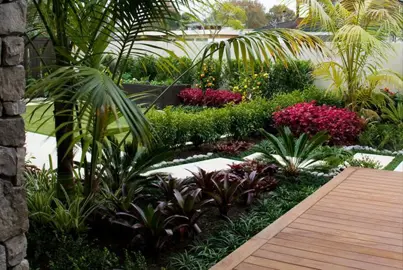
The Plant Company has the best Agave plants for sale, a fantastic range, and we can ship them to you fast! Browse our amazing range of New Zealand-grown plants to find beautiful plants for your garden.
Agave americana variegata, commonly known as the Variegated Century Plant, is a large succulent that features broad, powder-blue leaves with yellow...
Agave 'Ray of Light' is an excellent selection of the commonly known, Fox Tail Agave. This plant features rosettes of broad, pale green leaves with a...
Agave americana (Century Plant) is an iconic succulent renowned for its dramatic rosettes of large, grey green leaves with bold spines along the...
Agave Mediopicta Aurea is a variety of the commonly known, Century Agave, and is grown for its foliage and hardy nature. It grows as a rosette with...
Agave americana var Franzosinii, commonly known as the Majestic Agave, features broad and stiff, powder-blue leaves. The fleshy leaves protrude...
Agave attenuata (Foxtail Agave) is a highly ornamental succulent known for its smooth, spineless leaves and graceful rosettes. Unlike many agaves, it...
Agave attenuata 'Boutin Blue' is a stunning succulent prized for its soft, spineless leaves in an attractive blue grey shade. Forming elegant...
Agave 'Blue Flame' is grown for its foliage and hardy nature. This succulent produces rosettes of broad, fleshy, blue leaves. The leaves protrude...
Agave Blue Glow is grown for its foliage and hardy nature. This succulent produces rosettes of broad and rigid, fleshy, blue leaves with a golden-red...
Agave celsii is a striking succulent valued for its rosettes of broad, fleshy green leaves with smooth edges and a bold architectural form. Unlike...
Agave chiapensis (Mexican Agave) is a rare and attractive agave species native to southern Mexico, prized for its broad, glossy green leaves and...
Agave chrysantha, commonly known as the American Century Plant, grows as a rosette with fleshy, powder blue leaves that radiate outwards from the...
Agave Cream Spike is grown for its foliage and hardy nature. It grows as a rosette with fleshy, powder blue leaves with a golden edge. The leaves...
Agave decipiens, commonly known as the Sisal Agave, has broad and stiff, mid-green leaves which are fleshy with sharp edges. In summer, a stem...
Agave desmettiana Variegata features long and broad, variegated leaves. The fleshy, mid-green leaves with a yellow edge are held as a loose rosette...
Agave geminiflora, commonly known as the Twin Flower Agave, is an interesting plant often grown for its architectural qualities. It has stiff, dark...
Agave guadalajarana carries broad and fleshy, blue-grey leaves that emerge from a central core to give the plant a rosette like appearance. In...
Agave havardiana, commonly known as the Harvard Agave, features broad and stiff, silver-grey leaves. The broad and fleshy leaves are held as a loose...
Agave Joe Hoak is grown for its foliage and hardy nature. This Agave desmettiana variety grows as a rosette with fleshy leaves that are variegated...
Agave Kissho Kan, commonly known as the Butterfly Agave, is grown for its foliage and hardy nature. It grows as a rosette with thick and fleshy...
Agave Mediopicta Alba is grown for its foliage and hardy nature. It grows as a rosette with fleshy, grey-green leaves with a central, cream-white...
Agave montana, commonly known as the Mountain Agave, this variety features broad and stiff, dark green leaves. The broad and fleshy leaves are held...
Agave multifilifera has stiff and narrow, dark green leaves that protrude outwards from a central core. This gives a ball like display being held on...
Agave nickelsiae features short and stiff, dark olive-green leaves with white stripes. Mature plants may produce a flower spike that can reach up to...
Agave ovatifolia, commonly known as the Whale’s Tongue Agave, features broad and stiff, powder-blue leaves. It typically grows to 1 m tall and the...
Agave ovatifolia Frosty Blue, commonly known as the Whales Tongue Agave, features broad and stiff, powder-blue leaves. It typically grows to 1 m tall...
Agave parallelifolia features upright and fleshy, mid-green leaves. These are held off a central stem as it grows to about 60 cm tall and 30 cm wide...
Agave parrasana, commonly known as the Cabbage Head Agave, features short and erect, powder-blue leaves. The broad and fleshy leaves are held as a...
Agave parryi, commonly known as Parry’s Agave, features broad and stiff, silver-blue, powdery leaves. The broad and fleshy leaves are held as a loose...
Agave parryi Huachucensis, commonly known as the Artichoke Agave and Parrys Agave, this variety features broad and stiff, powder green-blue leaves...
Agave parryi Truncata, commonly known as the Artichoke Agave, features broad and stiff, powder blue leaves. It typically grows to 80 cm tall and 1 m...
Agave stricta is a striking architectural succulent recognised for its dense rosettes of narrow, upright leaves that form perfect spherical mounds...
Agave tequilana (Tequila Agave) is a bold and dramatic succulent best known as the source of tequila production in Mexico. It features striking...
Agave victoriae-reginae features thick, short, mid-green leaves that protrude outwards from a central core to give the plant a ball like effect. It...
Agave vilmoriniana (Octopus Agave) is a spectacular succulent known for its long, narrow, twisting leaves that resemble the arms of an octopus. The...
Growing colourful succulent plants such as Agave americana delivers a vast range of benefits:
We have a wide range of Agave that are ready for their new home, and we’ll help you find the right Agave for your space. Choose from a wide variety of locally grown plants that have been propagated and selected to thrive in NZ’s climate. We stock only the highest quality plants, sourcing them from NZ’s leading nurseries. Each plant is packed and transported with extreme care, ensuring it arrives to you in the same condition it was in when it left the nursery. If you are wanting to buy Agave plants, shop with confidence from the best in the industry.
Agave can be grown in most parts of New Zealand, but they prefer warm, dry climates. They will tolerate some frost, but they are not as cold-tolerant as some other succulents. They need full sun and a well-drained soil.
The best way to start growing agave is from a small plant or offset. Offsets are small plants that grow from the base of the parent plant. You can also grow agave from seed, but it can take many years for the seeds to germinate and grow into sizeable plants.
Agave plants grow slowly and it can take up to 10 years for an agave plant to reach maturity. Most species will flower before they reach full maturity.
Agave plants are relatively low-maintenance. They really only need to be watered when young as they become drought-tolerant once established. That said, they cannot survive without any water from irrigation or rain. They should be fed with a balanced fertiliser in spring.
Agave plants are pretty much resistant to pests and diseases. More importantly, the older they get, the more resilient they become. If you see any pests on your agave plant, you can treat them with an insecticidal spray.
Agaves grow well in pots. It is important to choose a large pot with plenty of drainage holes and to use a potting mix that is specifically designed for succulents. You should also water your agave regularly, especially when it is young but avoid over-watering it. Once or twice a week during summer and once a fortnight during winter is usually sufficient.
Agave plants can be trimmed. This usually involves cutting the plant back to contain its size and also to achieve a better shape. However, it is important to be careful not to over-prune them as this will not only slow them down but can weaken them to the point where they become more susceptible to pests and diseases. If you are unsure about how to prune an agave plant, it is best to consult with a qualified gardener.
Yes, you can harvest agave nectar. However, it is important to note that agave nectar is a high-sugar sweetener, so it should be consumed in moderation. To harvest the nectar, you will need to cut the flower stalk from the plant and collect the nectar in a container.
With proper care, your agave plant will thrive for many years to come.
Agave plants grow slowly, especially when they are young, and it can take up to 10 years for an agave to reach maturity. However, the growth rate will depend on the climate, soil conditions, and the amount of sunlight the plant receives. In ideal conditions, a young agave plant can grow up to 30 cm per year. However, the growth rate of an agave plant will slow down as the plant gets older.
Agave plants can range in price from $15 to $250, depending on the variety and size. Smaller plants can be purchased for $15, while larger, more mature plants can cost upwards of $250. The variety of the agave plant can also affect the price. Some rarer varieties can be quite expensive.
Some Agave can be grown as a houseplant and you need to choose the right variety. Some popular varieties that can be grown indoors include:
No matter which variety of agave you choose, be sure to give it plenty of light and water it infrequently. Agave plants are succulent, meaning they are drought-tolerant. They are also relatively slow-growing, so you only need to repot them every two or three years, using a well-draining potting mix.
The lifespan of an agave plant varies depending on the species, but most agave plants live between 10 and 30 years. Some species of agave, such as the Agave parryi, can live for up to 50 years, while others, such as the Agave americana, typically live for 10 to 20 years.
Agave is a type of succulent, not a cactus. While both agaves and cacti are adapted to arid environments and store water in their fleshy tissues, there are several key distinctions between the two.
Aloe vera is not an Agave plant. They are both succulent plants, but they belong to different families. Aloe vera belongs to the Asphodelaceae family, while agave belongs to the Agavaceae family. This means that they have different evolutionary histories and are not closely related.
Whether you need assistance finding the plant you’re looking for or you simply want to know more about who we are and what we do, we invite you to get in touch with us today. A member of The Plant Company team will get back in touch as soon as possible.


